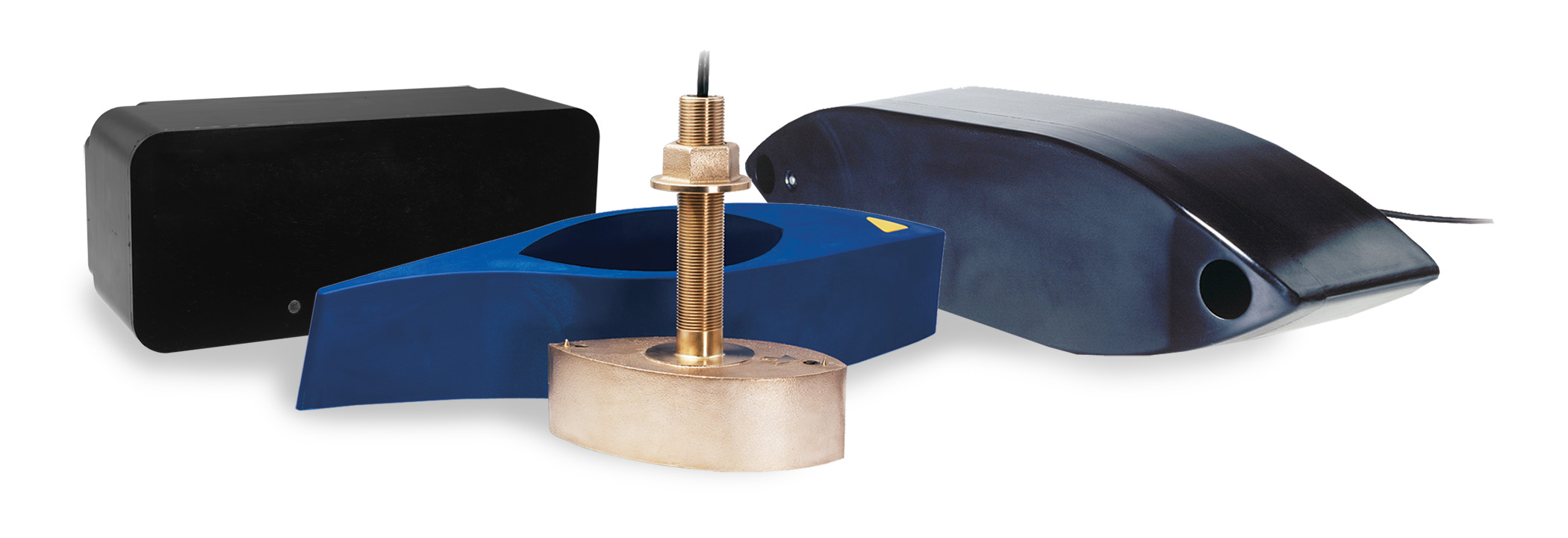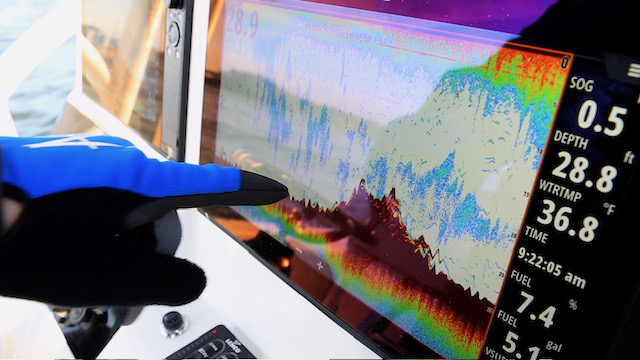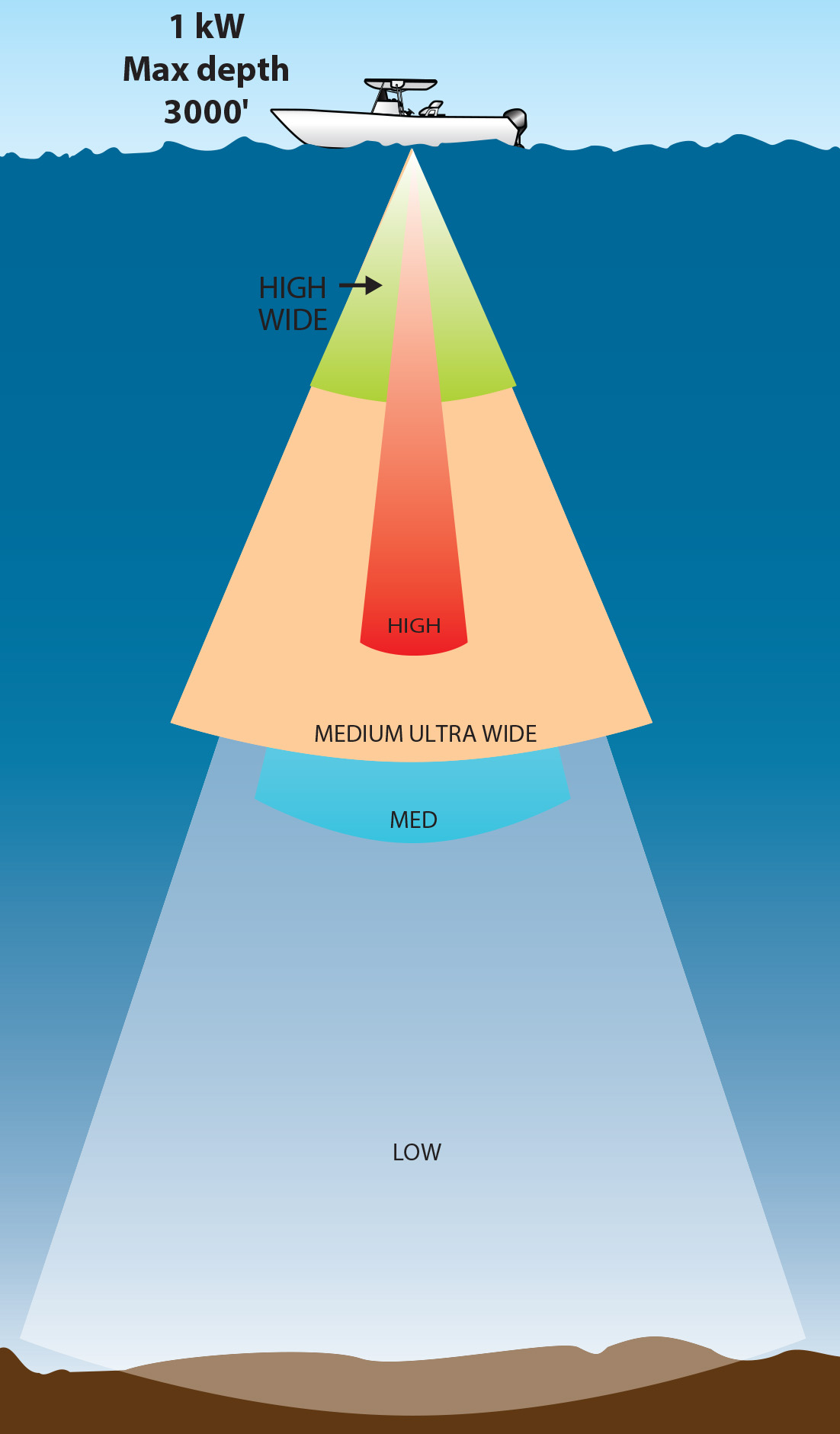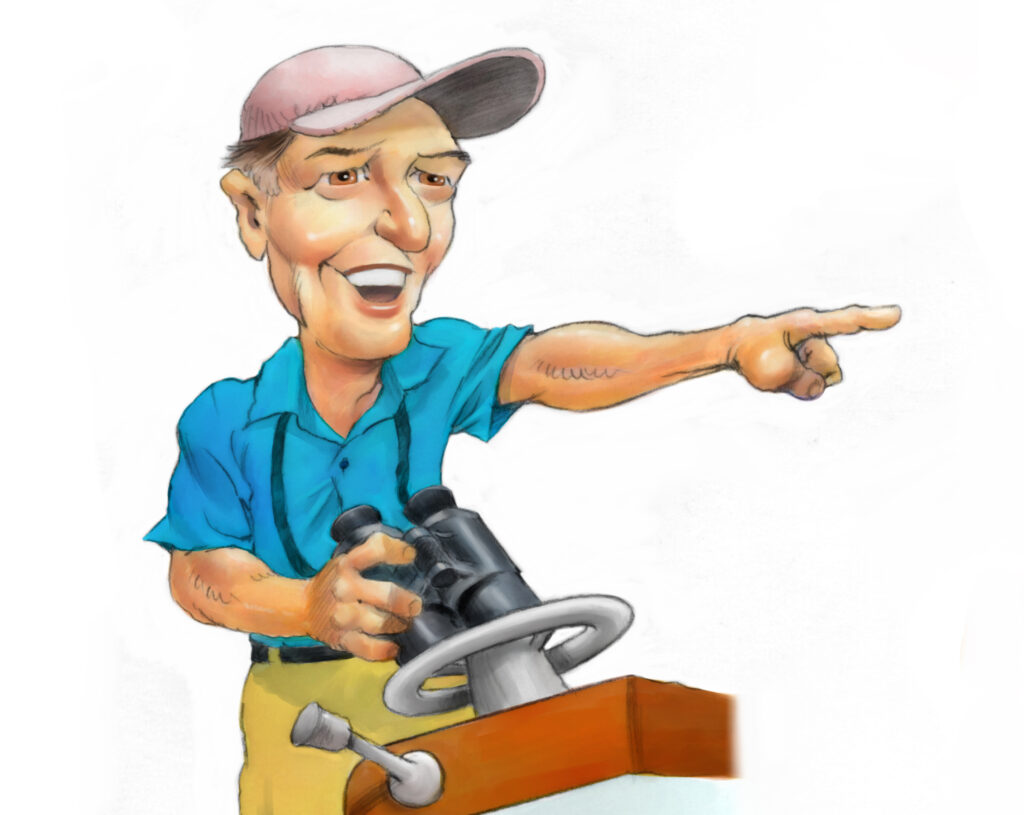Table of Contents
Understanding Fishing Gear: More Than Just a Hobby
If you’ve have been married for as long as I have, it’s safe to say that your spouse has probably questioned you about the number of fishing rods you own or maybe the number of golf clubs you “need.” Certainly, a non-golfer has trouble understanding why there are so many clubs in a golf bag. My wife stopped asking years ago, but when we are out on the boat and the rods start coming out of the locker, she just shakes her head. I have explained to her numerous times that having the right tool for the job at hand is critical to getting the job done right. Each rod’s flexibility, length and sensitivity is specifically designed for some technique I’m planning to use to catch fish. The same can be said for the set of golf clubs, every club is made to provide the performance needed for the shot you have to make. I look at the transducers on my boat in exactly the same way. The right frequencies onboard mean I’ll have the right tool for the job, no matter what my fishing style will be for the day.

The Science Behind Fishing Tools: Transducers Explained
Having a boat equipped with a wide selection of transducer frequencies will provide the opportunity to make your day fishing a more successful one. For you skeptics of this thinking, I’ll meet you halfway on one point we can all agree on; most any fishfinders can show you a picture of the bottom. The bottom is the easiest thing for a fishfinder to display. However, different frequencies and beamwidth will provide the level of detail and information needed need to adjust locations, techniques, depth, baits and more. Having an assortment of frequencies to choose from makes those decisions easier. So, let’s dive into which frequencies are best for the day of fishing you have planned.
How Sound Frequency Affects Your Fishing Success
First, I’ll use an analogy to illustrate how frequency has different performance properties at various distances. Picture yourself at a stop light and a car is coming up beside you with their stereo speakers blasting a tune. When they’re far away, you probably only hear the low thump of the base. The thumping is pretty non-distinct, but as the car closes in on you the mid-range sound starts to reach you and you begin to hear mid-range instruments and a singer, but still the sound is a bit muddied. Once the car is beside you and the high treble sounds are in range, you hear it all, the high frequencies and details of every instrument, the mid-range rhythms and the low thump of the base. When the traffic light goes green and they pull away, the sound leaves you in reverse order. Frequencies from your transducer work in the same way when it comes to distance and depths.
Choosing the Right Transducer Frequency for Your Fishing Needs
To keep things simple, I’ll use Airmar’s popular B175 line of 1 kW Chirp-ready transducers as an example, since the line has the complete assortment of frequencies to choose from. In the B175 line of transducers, there is a model containing each of the following frequency bands, Low, Medium, High, Hide-Wide beam and the newly introduced Medium Ultra-Wide beam. Each transducer model has a range of frequencies that the fishfinder can utilize, and the Chirp software in the fishfinder will blend the return information from all of the frequencies it transmits on, into one image on the screen. It’s fairly standard that today’s go-fast center console boats are equipped with one or more of these models. So, what frequencies should you have on your boat and when do you want to use it?
Low Frequency
Airmar’s B175L is a low frequency (40-60 kHz) transducer which has a practical fish detecting range of 2500 feet. The fishfinder transmits on each frequency and each of those frequencies has a slightly different beamwidth, or pattern that the sound transmits in. In the case of low frequency, the beamwidths range from 32° at its widest to 21° at its narrowest. Those are pretty wide beams especially given that the coverage spreads out as the signal goes deeper. The strength of low frequency is the distance that the signal travels, which is deep. However, because the low frequency waves are spread out more than say a high frequency, the return echo from the bottom may not be as defined, and the deeper the water, the larger the fish would have to be to deliver back a strong return to the fishfinder. Low frequency is great for deep water searching for drop off and big structure, and also for targeting species that are larger such as sword fish and snowy grouper. This is not the frequency you want to use if your technique of the day is small jigs presented to structure-hugging fish.
Medium Frequency
The B175M, medium frequency (85-135 kHz) is a great all-around choice for shallow and deep fish out to 1500 feet. Because it’s higher in frequency than the B175L, it will deliver better target resolution such as separating game fish from schools of bait. It will also provide better bottom definition on your fishfinder, often nicely separating fish from structure in hundreds of feet of water. Its beamwidths cover less area under the boat than low frequency, however the signal in that narrower beamwidth (13 degrees on average) means it will deliver better resolution on smaller targets.The maximum practical fishing depth mentioned above, plus the nice shallow water performance of medium frequency makes it a good all-around choice if you only have space for one transducer. I’d use the label of Jack-of-all-trades on the medium frequency options.

High Frequency
High Frequency (130-210 kHz), as you might surmise, is the best frequency in shallow water, say inshore out to 1000 feet maximum. The beamwidth is much narrower (average 8 degrees) than those above however the high frequency and tight beamwidth deliver the best definition on bottom structure and fish, often time separating every baitfish in a large school on your fish finder screen. It’s the perfect tool for fishing structure where you want to see a jig and tight holding fish. The high frequency and narrow beam are the right choice for pinpointing a spot right under the boat.
High Frequency Wide Beam
High Frequency Wide Beam has really caught on in recent years, as anglers enjoy both the detail and the coverage that this option delivers. The B175HW has been constructed in a way that delivers a broad frequency band (150-250 kHz) with a constant 25° beamwidth, meaning all frequencies have the same beamwidth. Because of this, the depth to what it can travel is minimized to 500 feet but for a day of chasing sailfish, marlin, striped bass or tuna, zero to 500 feet, with lots of coverage and target separation, is the best tool for the job at hand. It’s no wonder it has been the go-to for anglers who spend a good portion of their fishing days looking in the upper water column. Conversely, it is not going to be the best to see the bottom details required for spotting fish holding tight to structure due to its wide beams which tend to average the bottom detail.
The newest tool in the toolbox is perhaps one of the most interesting. Recently Airmar announced the B175 Medium Frequency Ultra-Wide transducers. They had been asked by anglers who fish in the 800-1200’ range how they can get the best target resolution at depths that deep. Airmar Engineers developed a seven-element array that delivers 60-100 kHz in a fan shaped beam that is 16° fore/aft and from 57° to 73° port to starboard. That’s huge coverage considering at 800 feet of depth, the swath covered by the beam is as wide as 1200 feet. That’s serious coverage and with the frequencies higher than the low range of frequencies, it’ll interrogate targets with more frequency energy and therefore deliver back great target resolution. This option is sure to be a valuable tool to anglers who spend time looking for deep-water species where maximum coverage helps pinpoint targets to drop on.

Creating your Toolbox
Today’s marine electronics are incredibly powerful and flexible pieces of fishing equipment. Most provide opportunity to interface multiple transducers into the unit and then simply choose the frequencies you wish to use…or choose all the frequencies in the transducer and let the fishfinder software inside paint a great image of the depths below. When setting up your boat, first decide the depths and techniques that are most frequently going to be used. Then simply match the right beams widths and frequencies to create the toolbox you’ll need. Chirp-technology allows you to use all the frequencies in your toolbox, or just the ones you want to use for the depth and technique you’re going to be using. Airmar also makes dual frequency housings where they pair the most popular frequency selections into one housing. Airmar has a list of certified installers on their website that can assist you with which models and installation location is best for your boat.
This article was written by Craig Cushman, Airmar.
Here is a good Q & A with Craig Cushman from Airmar on Chirp Frequency
Don’t Forget to Check Out Our Sportfishing Job Board! Did You Know? It’s the perfect platform for seeking skilled captains and mates. Whether you’re on the hunt for your dream team or looking to join one, your next big adventure begins here. Explore the opportunities now! Click Here
Dive Deeper into the World of Sportfishing
Unlock Exclusive Savings: Enjoy 50% Off Your Subscription!
Are you ready to explore the thrilling world of sportfishing from the comfort of your home? Subscribe now and embark on a journey filled with captivating stories, expert insights, and insider tips. Choose between our digital or print edition and secure an incredible 50% discount on your subscription.
Subscribe today and get ready for an adventure like no other. Click here to subscribe and elevate your sportfishing experience with InTheBite Sportfishing Magazine.
















